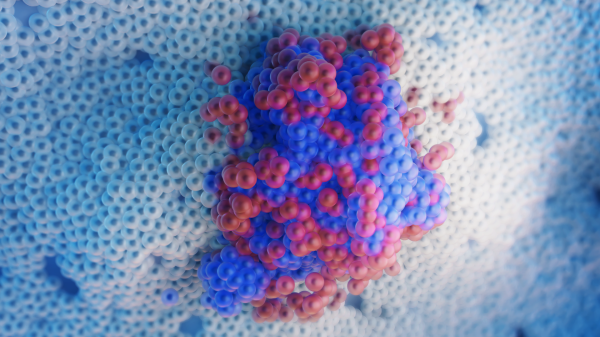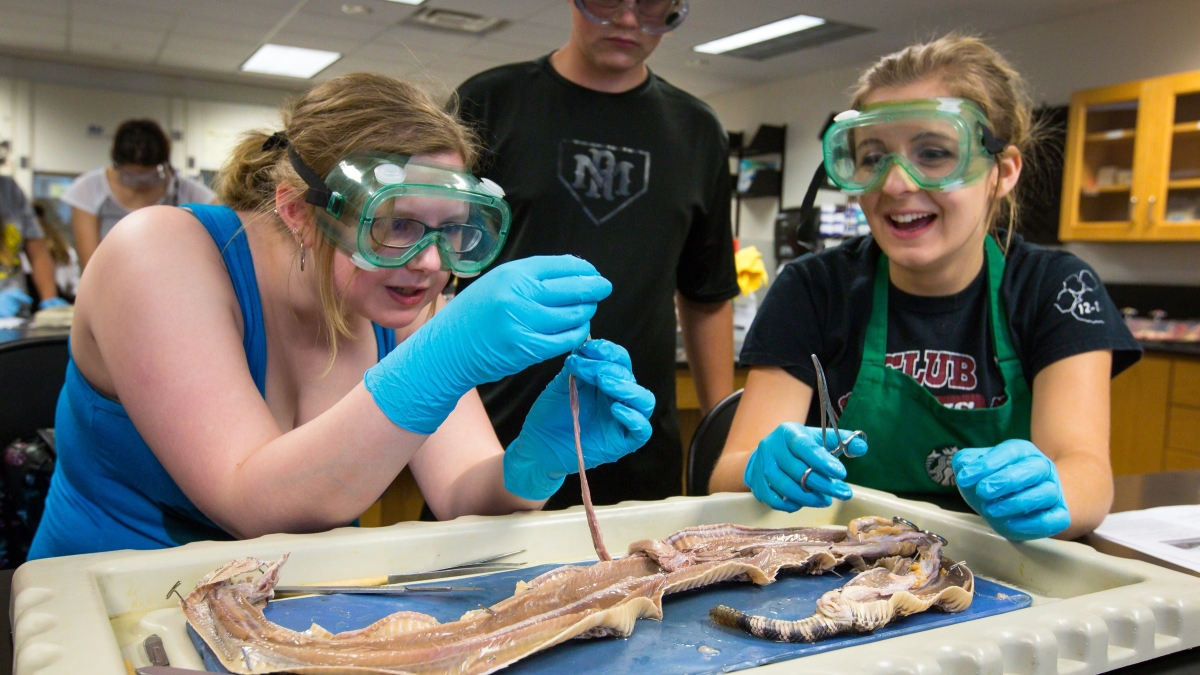On a hot summer morning on Arizona State University’s West campus, Darra Browning was all smiles. Like many educators at ASU, she is excited and passionate about her field of expertise, and she was sharing that enthusiasm with classroom full of ambitious high schoolers at the inaugural Veterinary High School Summer Camp in June.
Browning, an instructor in the Math and Natural Sciences Division in the New College of Interdisciplinary Arts and Sciences at the West Campus, is a doctor in veterinary medicine. She swiftly and expertly covered topics such as the cardiovascular system and neurology, and the students put pencil to paper, taking diligent notes.
When asked, they could recite the lesson — parts of animal anatomy — without hesitation. Throughout the lesson, Browning gave students memorization tips such as color coding and visual representations to learn the lesson, methods she teaches students enrolled in her classes.
“It’s important to not only learn the material, but find ways to retain the information,” Browning said. “As an educator, it’s invaluable to teach students study skills and enable them to have a college classroom experience. When they apply and are admitted to college, they are prepared and have the tools necessary to succeed in their chosen field.”
Knowledge of animal anatomy is essential, but the human-animal bond is a very important part of veterinary medicine as well, she explained. Students brainstormed on how, as a veterinarian, they can help a client through the loss of a pet. Through a group activity and a bit of creativity, students designed posters that would help clients cope with their grief.
McKenna Willis, a recent graduate of Red Mountain High School in Mesa, heard about the camp through her mom, who works at her high school.
“I’ve always wanted to be a veterinarian. I always like to capitalize on opportunities like this,” Willis said. “This is my second or third class I’ve gone to over the summer, but this one is really cool because I haven’t really done classes that did a lot of dissections like this.”
Willis liked the in-depth, hands-on approach of the camp and would recommend it to students interested in the field.
Instructor Darra Browning (center) talks to 10th-grader Char McIntosh about the cow kidney that ninth-grader Sophie Paul (left) is exploring as part of the Veterinary High School Summer Camp’s "Comparative anatomy lab" with students examining a rattlesnake, dogfish shark, squid and animal organs at the West campus on Wednesday, June 8. Photo by Charlie Leight/ASU
“I feel like we get a more competitive edge doing this kind of stuff because you learn before you actually get to the class. By the time you’re in the class, you already have a good foundation to go off of. So instead of being there for the first time, really concentrating on taking notes, you can concentrate on what you don’t know and build off of what you already know.”
Her lab partner Erika Maxwell, a recent graduate from Doherty High School in Colorado, was also enthralled in the information and dissection of the day.
“Recently I discovered I wanted to do veterinary studies, so I’d stumbled upon it on the ASU website and decided to come because it seems like fun,” Maxwell said.
Maxwell, a future Sun Devil, will be attending ASU's West campus in the fall, majoring in Applied Biological Sciences, Pre-Veterinarian Medicine.
Although her program is based at the Polytechnic campus, she chose the West campus because it’s closer to home — her mom now lives in the West Valley.
“I like that it’s smaller,” she said. “Bigger campuses, places that are more crowded, I don’t like as much. I like the one-on-one that ASU offers, especially at their West campus.”
The camp to her was completely worth it.
“I learned tons this week, tons I had never learned before. Just in one day we talked about animal behavior for 30 minutes, and I figured out I was training my dog wrong,” Maxwell said.
Top photo: Incoming ASU freshman Erika Maxwell (left) examines a rattlesnake's organs, along with 10th-grader Kole Sawyer and recent Mesa Red Mountain graduate McKenna Willis as part of the Veterinary High School Summer Camp's "Comparative anatomy lab" at the West campus on Wednesday, June 8. Maxwell will be majoring in pre-veterinarian medicine. Photo by Charlie Leight/ASU Now
More Science and technology

ASU and Deca Technologies selected to lead $100M SHIELD USA project to strengthen U.S. semiconductor packaging capabilities
The National Institute of Standards and Technology — part of the U.S. Department of Commerce — announced today that it plans to award as much as $100 million to Arizona State University and Deca…

From food crops to cancer clinics: Lessons in extermination resistance
Just as crop-devouring insects evolve to resist pesticides, cancer cells can increase their lethality by developing resistance to treatment. In fact, most deaths from cancer are caused by the…

ASU professor wins NIH Director’s New Innovator Award for research linking gene function to brain structure
Life experiences alter us in many ways, including how we act and our mental and physical health. What we go through can even change how our genes work, how the instructions coded into our DNA are…
